Let me say right off the bat that I almost certainly got my moneys worth from this game. I paid $100 (Collector’s edition you know), and I certainly got more enjoyment than I’ve gotten for other things I’ve paid $100 for, but it doesn’t change my overall opinion.
So let’s get the hyperbole out of the way first. Two months ago today Diablo 3 was released, and in looking back over these two months now, I’ve never been more disappointed in a video game. I may even go so far as to say it has essentially killed PC gaming for me.
Before that, a few stats! I work as a game developer, so I have a lot of friends/associates that are in the industry as well. A very large number of them were stoked about Diablo 3 as I was, and they were on my RealID list. In addition, I’ve played World of Warcraft since launch, and have quite a few folks from there on my list as well. Those first few days after launch my friend list was completely full of folks playing. It wasn’t uncommon to see 20+ people on at any given time.
I just logged on a minute ago and looked at all my friends. It tells me the last time they’ve been on, and aside from a single outlier, not a single friend of mine had been on in 18 days. I had 2 friends who were last on 18 days ago, the vast majority of folks were last on 30-45+ days ago, which means they only lasted 2-4 weeks in the game. Do I have enough data to form any valid statistical conclusions out of this? Of course not, but the fact that the first two weeks the game was out, i had approximately 95% of my friends list playing the game, and these last two weeks I’ve had only about ~3% of my friends list even *log on* (who knows what they did in that time) is damning for a game Blizzard has stated they wanted to last for “years”.
Why has the game been so disappointing though? What prompted such a bold statement to begin with? It’s a combination of things. I won’t even get into launch day problems because they’ve been re-hashed over and over again, but it’s an indicative outcome of their mindset (if you ask me).
There is no way the sheer number of people waiting to play at launch was a surprise, after all they stated themselves that it was the game with the largest number of pre-orders ever. They’ve been running the most successful MMO for years now, they new what it would take to have a successful launch. It would have been expensive though. They would have had to stand up enough servers to handle the launch rush and then had a ton of excess servers doing nothing a couple days later when everyone had settled into their normal playtimes and habits.
Do i understand that? sure. That doesn’t change the fact that they looked at the situation and decided having a large group of their customers having a horrible (and essentially non-functioning) experience was an acceptable byproduct to save some money. Completely inexcusable and the Blizzard I remember from the past would have never made that choice.
Of course, this is all because the game requires a connection to Battle.net to do anything, always online. This is done for the sake of the auction houses (which I’ll get to shortly), but you can’t even *access* the auction houses in game! I mean, really? The vast majority of the game is spent staring at the AH UI which is horrible to begin with. You could have just as much fun playing multiplayer Excel.
I’m no stranger to making a call on whether a particular nasty bug can be shipped or not. It’s an unfortunate necessity when doing any software development, and games are no exception. I’ve shipped games with bugs in them, we all have. Most times these bugs are found very late. Yet some of the bugs in Diablo I wonder how they could have been found late, and how they could have decided it was ok to ship with them.
For example, once you’ve reached maximum level, you get a stacking buff called Nephalem Valor. The “expected” game play needs you to have that buff maxed out at all times. You can lose the buff by leaving the game or changing skills. However, that’s not even true. Let’s say for example, you accidently drag one of your abilities off the toolbar for a moment (not hard to do in a game that requires frantic clicking). Instantly you lose all your stacks, even if you drop the ability right back where it was. So naturally they have a “lock toolbar” command yes? I mean, World of Warcraft had one seven years ago. Nope, not only do they not have one, they said they would try to add one in a few patches.. ie, months down the line. I mean.. seriously, what? It takes months to add a single boolean variable option which they’ve already *half* implemented? Come on now, seriously?
of course, you don’t even need to do that. You can go to your skill list in the UI and look around, check out some other skills, but ultimately go back to the same skill set you had. You better make sure you click cancel there though, otherwise, if you click OK, you lose your stacks then too.. Even if you DIDN’T CHANGE anything. I mean, come on?
Doesn’t get any better either. What if your internet had a hiccup and you got disconnected for 2 seconds? All your stacks gone. Oh, if loot had dropped and you were about to pick it up when that happened you lost the loot too.
I said a few seconds ago that the stacks of the valor buff were the “expected” way to play, and I gather this because anything that was *not* playing in this way, they’ve nerfed to the ground. Want to kill a enemy with a lot of magic find? Oh, well we’ve made it so those enemies ignore magic find. Want to break vases for gold? Well they drop nothing now. Want to clear a dungeon that’s pretty hard and then collect stuff from the chests? Oh, well chests now ignore magic find too.
The entire *point* of Diablo was farming items, and Blizzard has continually nerfed every ability folks had to farm items somewhat quickly. Why? To “promote a stable economy” or something, but who the hell cares? This is supposed to be an action RPG, I want to play, and get powerful. I want to do this without being forced into the auction house.
Before i get to the auction house though, I just want to reiterate that I sincerely believe someone(s) at Blizzard has lost their way. They’re treating Diablo like it was an MMO which it wasn’t. They’ve continually sacrificed the fun to make something “balanced” (again, who cares?). They’ve continually punished *real* players to try and stop the “bots” from “ruining the economy”, which is ridiculous and has failed anyway. The economy is already ruined, and it has been since the game launched. After all their fixes, has it gotten better? No, prices continue to rise, gold continues losing its value.
The items themselves aren’t even that interesting like they were before. There were items in Diablo 2 that let me use other classes abilities! Now all I get is some +int or whatever other stat I’m going for. On Inferno difficulty you’re essentially forced into 1 or 2 builds for your class to have a chance (so much for build diversity), and the *entire* gameplay is based around gear. Getting 1 shot by an enemy you never saw is not skill. Getting a bit of gear so you can maybe survive that one shot isn’t skill. Kiting an enemy to kill them is skill, but hey, they decided if you couldn’t kill them quick enough, they enrage and insta-kill you. So the little skill you could use is laughed at and you’re told once again “no, get better gear”. Oh, and they *punish* you by dramatically increasing the repair cost of the items if you happen to die. As mentioned, you *will* die, because you will be one shot from something off screen you never saw. Or a huge lag spike (always online remember) will kill you. I feel sorry for those folks playing hardcore. The entirety of Inferno is predicated on you finding better gear.
Will you find this better gear while playing though (even after the “increase in drop rates” – which doesn’t even come close to counteracting the nerfs they put in place)? Possibly, anyone can get lucky, but almost certainly not. You have to get extremely lucky three times in order to get a good item. First, you have to have an appropriate level item drop. Then that item needs to have rolled the right stats for you. After that, the item needs to have rolled into the high ranges of those stats. All of it is possible to happen, but the odds are dramatically stacked against you.
So what do you do? You have to go to auction house, and it doesn’t take long to realize how terrible that is. You can either pay an extraordinary amount of gold for an upgrade, or if you’ve been unlucky and not found anyting to sell (so you don’t have much gold to use because you spent it all on repairs), you can spend real money on upgrades. Everything in the game seems tailored to encouraging you to go to the auction house to get gear. Fun has been sacrificed all over to get you to go there.
Myself personally; any upgrade I could get will cost me millions of gold I don’t have. I will never *ever* purchase anything from the real money auction house because I won’t be giving Blizzard anymore money. So my choices are to bang my head into the desk while I farm the same areas over and over again, never getting anything remotely useful to anyone and never having any sense of progression, spend real money to get said progression, or stop playing. It’s not a hard choice at all.
In Diablo 2 I almost always felt some sense of progression. In Diablo 3 once I hit the level cap (which was extremely easy to do), it basically stopped.
I’m tired of writing so I’m going to wrap this up, and I didn’t even get to some of the other problems Blizzard has caused, such as the “Hey, you paid for the game, but you can’t play it for 3 days” (even if it was a “mistake”, how could you *ever* release that), or the huge nerf of IAS (improved attack speed) items. Imagine the guy who paid $200 in real money for an item to log in the next day and find the items power was cut in half. Yeah, that’s real fair.
To finish with the hyperbole I started with, Blizzard has completely and utterly failed me as a gamer with this offering and their reputation has been soiled tremendously in my eyes. So much so, that I won’t be picking up Mists of Panderia, nor probably any other game they make in the forseeable future. I used to respect that they made games that were fun above all else, but they’ve lost that in my eyes. Ruining the fun of a game to increase it’s profit is a losing strategy, and the Blizzard I remember from 15 years ago would have never been so naive to believe the opposite.
I have every Blizzard game made in the last 15+ years. If there was a collector’s edition of the game, I have that as well. They were the definition of what I considered a great video game company. It saddens me immensely that I’m now saying that in the past tense. Given the only PC games I’ve *really* played over the last 5+ years have been Blizzard games, Diablo has effectively killed PC gaming for me as well.

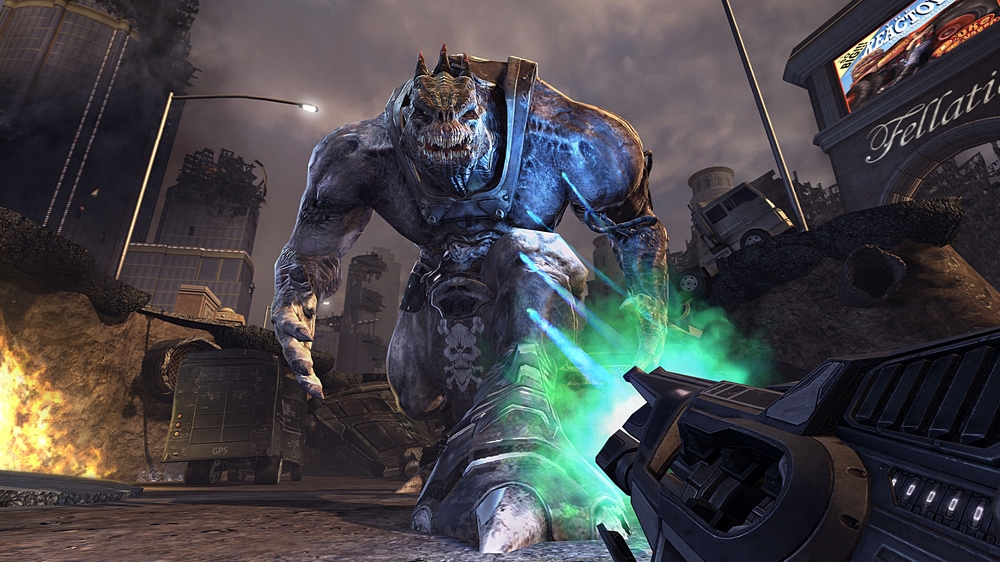 I have to say that I was pretty excited. I imagine that nostalgia was kicking in or something, but it made sense at the time. I absolutely loved Duke Nukem 3D and the last gearbox game I had played was
I have to say that I was pretty excited. I imagine that nostalgia was kicking in or something, but it made sense at the time. I absolutely loved Duke Nukem 3D and the last gearbox game I had played was 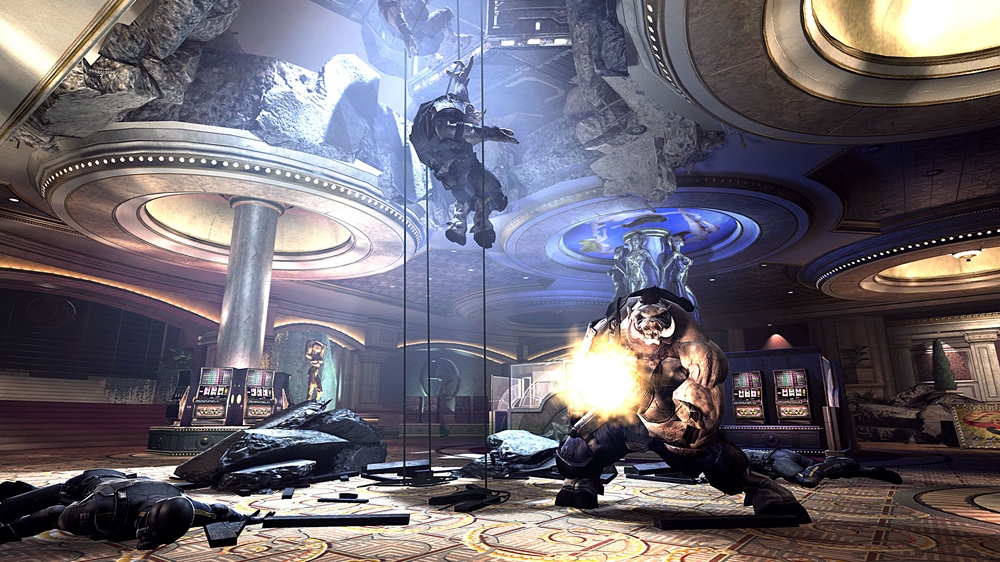


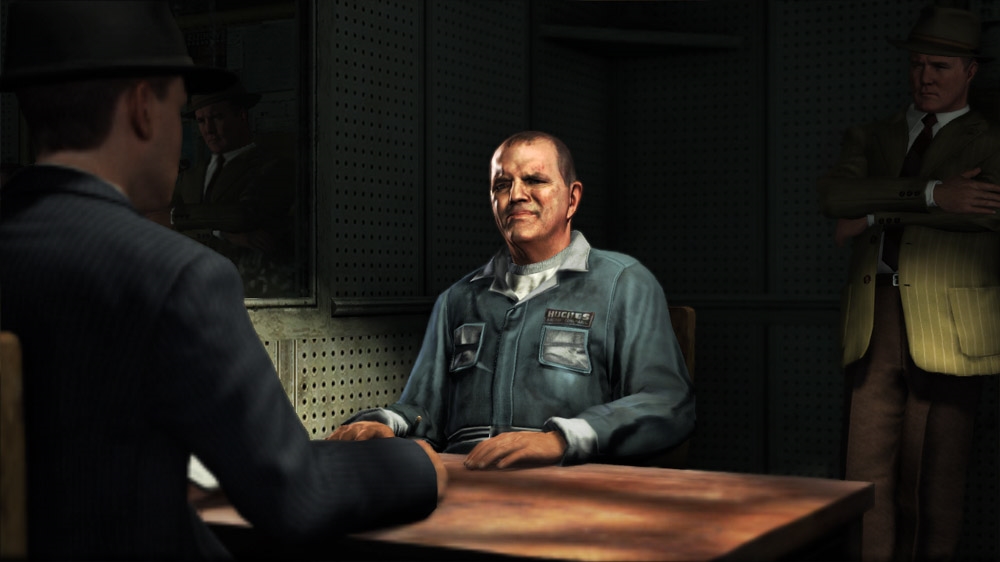 The technology they used for capturing facial expressions and displaying them to us during the game was absolutely amazing. While they probably could have made the game without using “real” Hollywood actors, I think the game would have suffered for it. Using “real” actors and this technology was incredibly immersive. It was the closest I have ever seen to getting out of the uncanny valley, and part of me wants to argue it succeeded in getting out completely.
The technology they used for capturing facial expressions and displaying them to us during the game was absolutely amazing. While they probably could have made the game without using “real” Hollywood actors, I think the game would have suffered for it. Using “real” actors and this technology was incredibly immersive. It was the closest I have ever seen to getting out of the uncanny valley, and part of me wants to argue it succeeded in getting out completely. Having only those two options would have made the game entirely too easy though, so lies (by far the more common response) were broken up into two different categories. You could either choose “doubt” when you thought they were lying but had no proof or “lie” if you thought you could prove they were lying. The “lie” choice always felt entirely too arbitrary though, much like the old adventure games back in the day. If you weren’t following the exact logic the game designer was, deciphering whether or not you had “proof” of a lie was a dice roll half the time. Early on in the game I figured out that accusing someone of lying would sometimes give you a hint as to what kind of proof was needed, and you could always “back out“ of the accusation so that became the way I played most interrogations. If I wasn’t sure if I had proof, I would accuse them anyway, and if I didn’t get a hint that helped, I would back out and choose “doubt”. Sort of a “trial by error” way of gaming that hints at bad design if you ask me.
Having only those two options would have made the game entirely too easy though, so lies (by far the more common response) were broken up into two different categories. You could either choose “doubt” when you thought they were lying but had no proof or “lie” if you thought you could prove they were lying. The “lie” choice always felt entirely too arbitrary though, much like the old adventure games back in the day. If you weren’t following the exact logic the game designer was, deciphering whether or not you had “proof” of a lie was a dice roll half the time. Early on in the game I figured out that accusing someone of lying would sometimes give you a hint as to what kind of proof was needed, and you could always “back out“ of the accusation so that became the way I played most interrogations. If I wasn’t sure if I had proof, I would accuse them anyway, and if I didn’t get a hint that helped, I would back out and choose “doubt”. Sort of a “trial by error” way of gaming that hints at bad design if you ask me.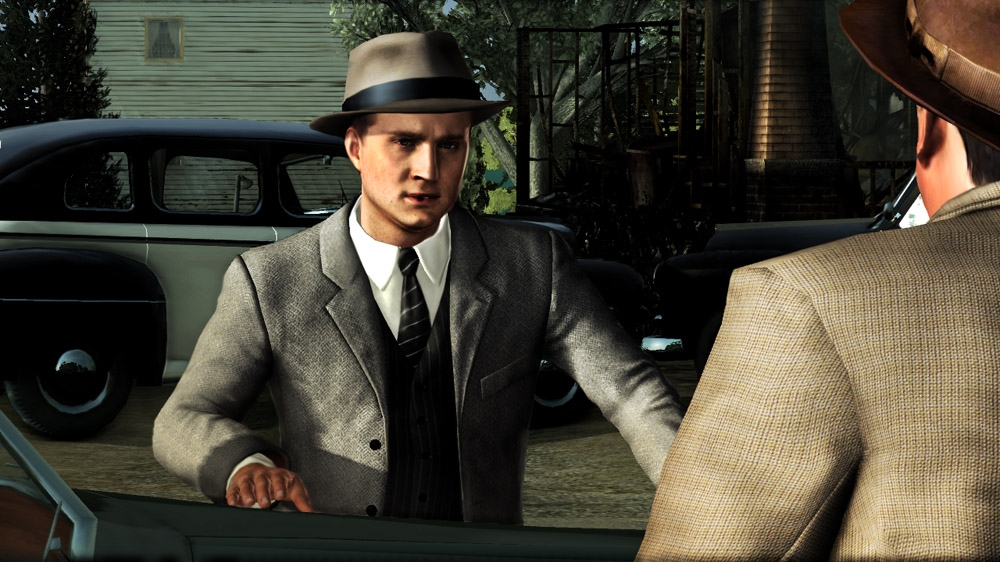 The story of the game was another factor that I liked. It was basically broken up into two overarching sections as you worked your way across five different “desks” in the precinct. You start as a lowly beat cop on patrol before working your way through traffic, homicide, vice and finally arson. There’s an apex of sorts at the end of the homicide cases and the final resolution of the game at the end. The story was well told and kept me intrigued through the end, but I have one big complaint about it.
The story of the game was another factor that I liked. It was basically broken up into two overarching sections as you worked your way across five different “desks” in the precinct. You start as a lowly beat cop on patrol before working your way through traffic, homicide, vice and finally arson. There’s an apex of sorts at the end of the homicide cases and the final resolution of the game at the end. The story was well told and kept me intrigued through the end, but I have one big complaint about it.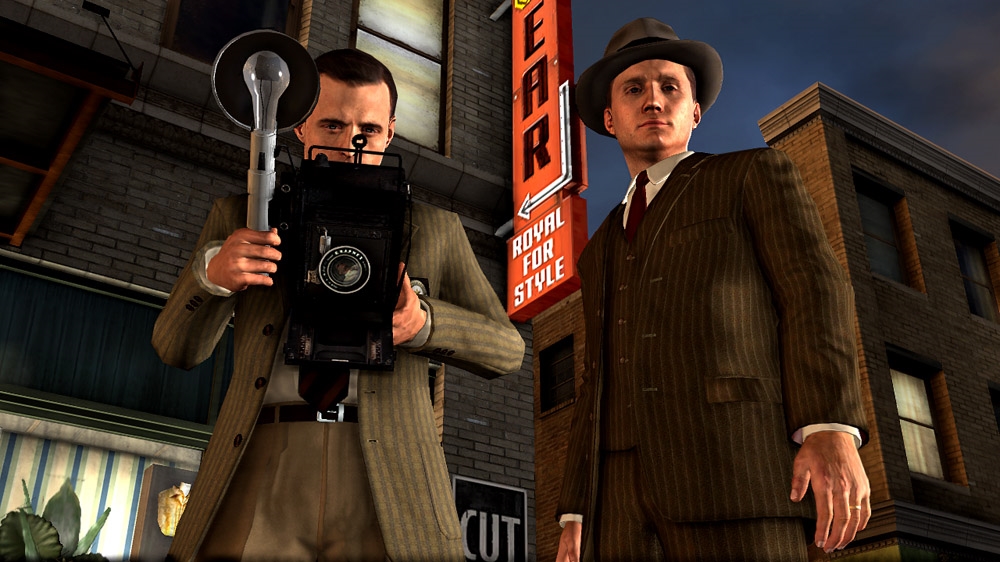 There were also minor complaints in that my interrogations would go from calm talking to yelling insanely accusing people of lying back to calm talking in a matter of seconds, but given the huge dialog trees and the various outcomes that were possible depending on how I reacted, I don’t fault them too much for that. Overacting a bit perhaps, but nothing too detrimental.
There were also minor complaints in that my interrogations would go from calm talking to yelling insanely accusing people of lying back to calm talking in a matter of seconds, but given the huge dialog trees and the various outcomes that were possible depending on how I reacted, I don’t fault them too much for that. Overacting a bit perhaps, but nothing too detrimental.